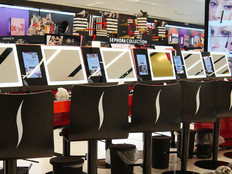Measuring Retail Foot Traffic Like Web Traffic
Every major website pays close attention to the traffic it gets. Now brick-and-mortar retailers are analyzing in-store traffic in much the same way, using their customers' own smartphones.
By installing sensors that read Wi-Fi and Bluetooth signals emitted by phones, stores can see which aisles shoppers frequent most, measure how long they spend inside and identify repeat customers. They can use the data to figure out which displays are more effective at pulling in customers or how long people are waiting in checkout lines.
The sensors work by collecting unique identification numbers emitted by each handset. In most cases, stores aggregate the data and obscure it to avoid identifying individual shoppers. Others offer customers the opportunity to receive personalized recommendations and discounts based on their shopping behavior.
This tracking can be controversial. In May 2013, Nordstrom abandoned the technology after customers voiced concerns about how their information might be used. But for most store chains it’s full steam ahead; the retail analytics market is expected to more than double over the next five years, surpassing $5 billion by 2020.
For more on how retailers are using technology to enhance the customer experience, check out, "Sephora, Neiman Marcus Turn to In-Store Technology to Enhance the Retail Experience."






